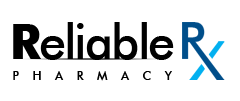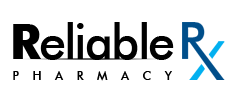Migraine management for busy professionals can be challenging, but minimizing the impact and maintaining productivity is possible with the right strategies. Treating any health issue in a timely manner enables us to eliminate severe health consequences. When remedies don’t work, switching to seeking a health expert’s advice should be a priority.
This page will discuss migraine management for busy professionals. How can they stay productive while working? Before moving on to that information, it is important to understand some basic symptoms and reasons associated with migraines.
Migraine symptoms include pain, nausea, vomiting, fatigue, and sensitivity to light and sound. Throbbing or pounding pain on one or both sides of the head is more common; however, this pain can be moderate to severe and can worsen with movement.
What causes migraine?
Migraine reasons include several factors like hormonal changes, stress, and certain foods and drinks that can cause migraine. Other factors include sudden changes in weather or environment, too much or insufficient sleep, strong smells/fumes, loud or sudden noises, low blood sugar, frequently skipping meals, motion sickness, etc., which can also cause migraines. Some people are likely to get migraine hereditary.
A migraine headache is a moderate to severe headache that can feel throbbing or pulsing. Migraines can cause pain on one side of the head and anywhere on the head, neck, and face.
An ocular migraine, also known as a retinal migraine, is a type of migraine that causes temporary visual issues in one eye. It’s usually not serious and can be treated with over-the-counter medications.
Migraine can be well treated with the right approach; however, it is not curable. Following prescribed migraine medicine is one of the safest ways to manage this condition.
Here are some key tips for managing migraines while staying productive at work:
- Identify and avoid triggers
-
- Dietary triggers – Certain foods like chocolate, caffeine, or processed meats can trigger migraines. Keep a food diary to track and avoid these.
- Stress management – Stress is a major migraine trigger. Practice mindfulness, deep breathing, or short meditation breaks during the day to lower stress levels.
- Lighting and screen time – Bright lights or prolonged screen exposure can lead to eye strain and trigger migraines. Use anti-glare screens, adjust lighting, or take regular breaks (e.g., the 20-20-20 rule: every 20 minutes, look at something 20 feet away for 20 seconds).
- Preventive measures and medication
-
- Preventive migraine drugs – Talk to your doctor about medications that can help prevent migraines if you suffer from frequent episodes.
- Acute medications -Over-the-counter pain relievers or prescribed medications like triptans can help manage the pain once a migraine starts. Having these on hand at work can be vital.
- Hydration – Dehydration can trigger migraines, so stay hydrated throughout the day.
- Establish a routine
-
- Regular sleep schedule – Consistency in sleep helps reduce migraine frequency. Aim for 7-9 hours per night, with a regular bedtime and wake-up time.
- Balanced meals – Skipping meals or irregular eating patterns can trigger migraines. Eat small, balanced meals throughout the day to maintain stable blood sugar levels.
- Create a migraine-friendly work environment
-
- Ergonomics – Poor posture can lead to neck and back tension, which may trigger migraines. Set up a comfortable, ergonomic workspace.
- Quiet space – If possible, have access to a quiet room or break area where you can retreat if you feel a migraine coming on.
- Essential oils or acupressure: Consider using calming scents like lavender or peppermint, which may relieve migraine. Acupressure techniques can also help alleviate tension and pain.
- Take breaks
-
- Short, frequent breaks – Avoid long stretches of work without a break. Even a five-minute walk or stretching can help alleviate tension and boost energy.
- Power naps – If you feel a migraine coming on, a 10-20 minute power nap can sometimes help prevent it from getting worse.
- Communicate with your team
-
- Manage expectations – If migraines are a frequent issue for you, it may be helpful to communicate with your manager or team about your condition. This can help manage deadlines and expectations when you need to take breaks or take time off.
- Delegate when necessary – Don’t hesitate to delegate tasks when a migraine affects your ability to work. It’s important to manage your workload to avoid overexertion.
- Know when to seek medical attention
-
- When migraines worsen – If your migraines become more frequent or severe or over-the-counter medications are no longer effective, consult a healthcare professional for further evaluation and treatment options.
- Use technology wisely
-
- Apps for tracking – Use migraine tracking apps to monitor patterns in your migraines. This information can help you identify triggers and discuss more effective treatments with your doctor.
- Distraction-free tools – Consider using apps that reduce screen brightness or block blue light to help manage digital strain during long hours at a computer.
By employing these strategies, busy professionals can reduce the frequency and intensity of migraines and take proactive steps toward staying productive and maintaining their quality of life at work.
Anti-migraine drugs help prevent and treat migraine headaches. Sibelium 10mg, Rizact 5 mg, Suminat 50 mg, and Sumatriptan 100 mg are some of the effective migraine medicines that can help manage your migraine. Check with your doctor to understand which medication is best for you.




